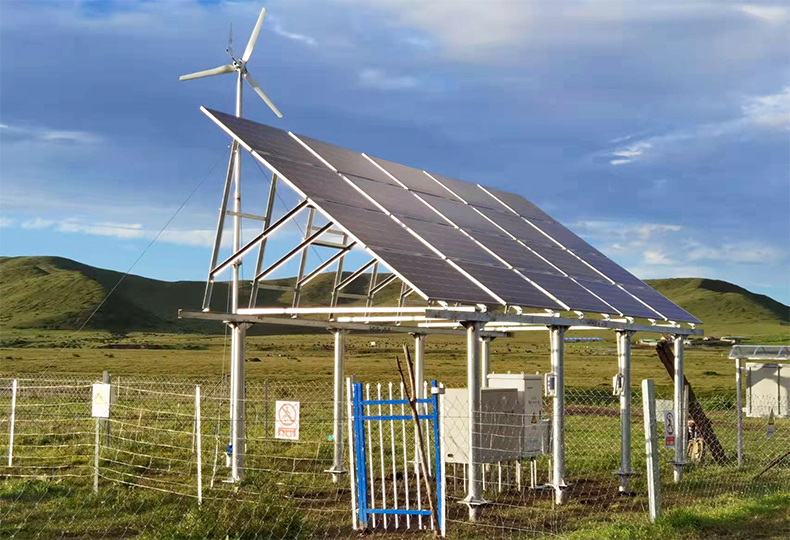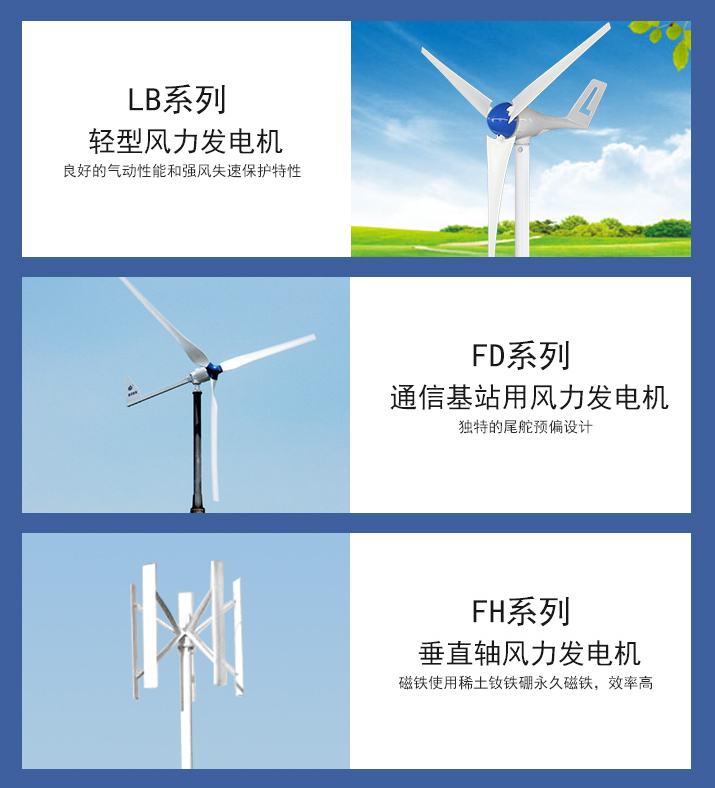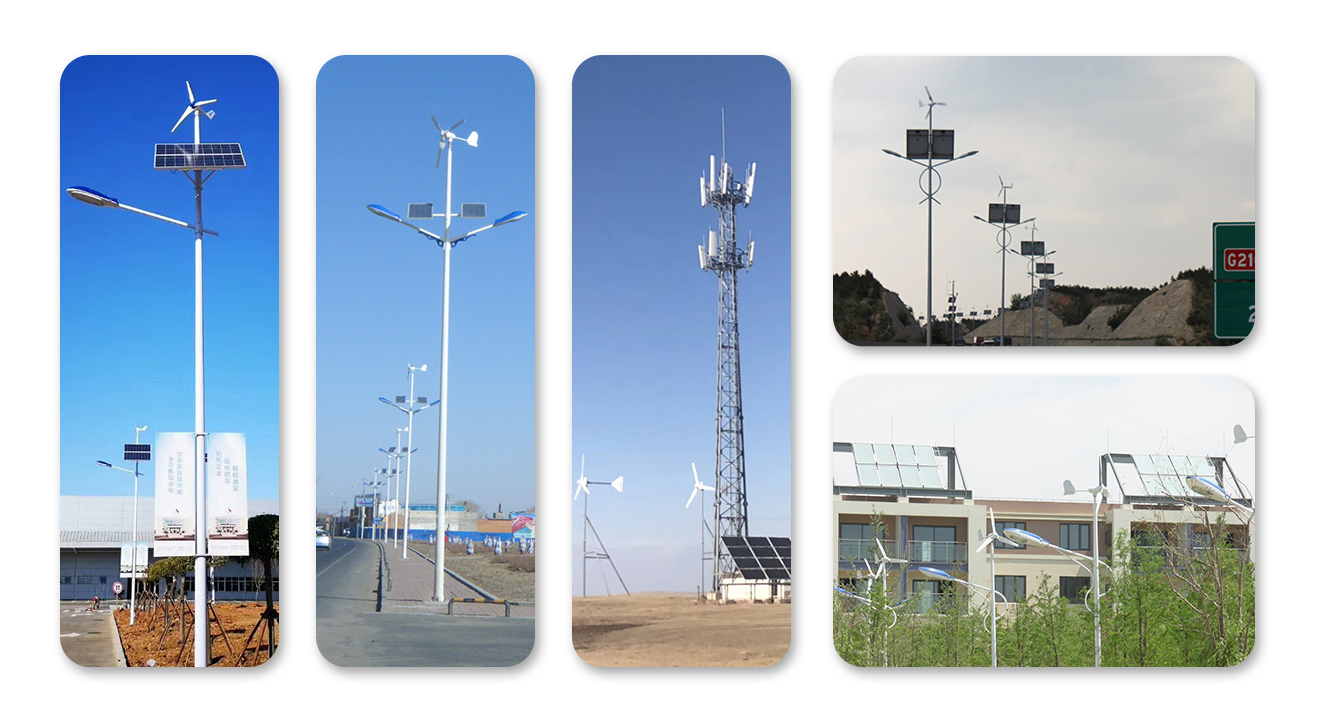How widely are wind turbines actually used?

With the rise of green energy, wind power, as an environmentally friendly energy source, is being increasingly utilized. Wind turbines have become a critical component of renewable energy technology and are widely applied across various industries such as power generation, petroleum, metallurgy, chemical engineering, thermal energy, agriculture, water conservancy, telecommunications, and transportation.
Although small-scale wind turbines are compact and simple in structure, they efficiently harness wind energy and convert it into electricity, offering significant convenience to daily life. In remote or off-grid areas, small wind turbines can form independent power supply systems for lighting, televisions, washing machines, and other household electrical needs, effectively addressing electricity access challenges in these regions.
Nanjing Oulu Electric's product lines, including the LB series of lightweight wind turbines, the FD series for communication base stations, the FC series specialized for street lighting, and the FH series of wind turbines, are known for their stable performance, reliable operation, and high efficiency. These products are extensively used in urban street lighting, traffic monitoring, distributed power stations, communication base stations, and other applications.

wind turbines
Moreover, wind turbines play a significant role in the construction and transportation sectors. They provide reliable power for a variety of applications, including:
Independent power supply for villas
Grid-connected or off-grid power generation on rooftops of public buildings
Infrastructure facilities such as streetlights, road surveillance systems, navigation beacon lights, traffic signals, gas stations, and toll stations
In the field of municipal development, wind turbines contribute to:
Streetlight power systems
Landscape lighting power systems
Outdoor advertising display illumination systems
High-speed electric vehicle charging stations
Power supply for public transit waiting shelters
Simultaneously, they serve critical functions in the telecommunications sector, such as:
Powering communication base stations
Supporting microwave relay stations
Providing energy for optical fiber maintenance stations

Application Example Diagram
Beyond these applications, wind turbines also play a critical role in major sectors such as petrochemicals, marine operations, meteorology, security, and national defense. For instance, they can provide power for safety monitoring systems of oil and gas pipeline networks, serve as emergency backup power for oil drilling platforms, supply electricity for domestic use on fishing vessels, support marine communication systems, power small-scale seawater desalination equipment, energize offshore aquaculture operations, run meteorological monitoring stations, support hydrological observation equipment, and maintain border surveillance systems.
Even in agriculture, forestry, and water conservancy, wind turbines are widely utilized. Examples include powering solar insecticidal lamps, supporting forest fire monitoring systems, and providing electricity for lighting embankment roads and landscape areas—all of which can be reliably supplied by small-scale wind turbines.
It is evident that wind turbines are not only extensively applied in daily life and infrastructure but also play essential roles across many critical sectors. They help customers reduce energy costs, lower carbon emissions, and contribute to sustainable development.